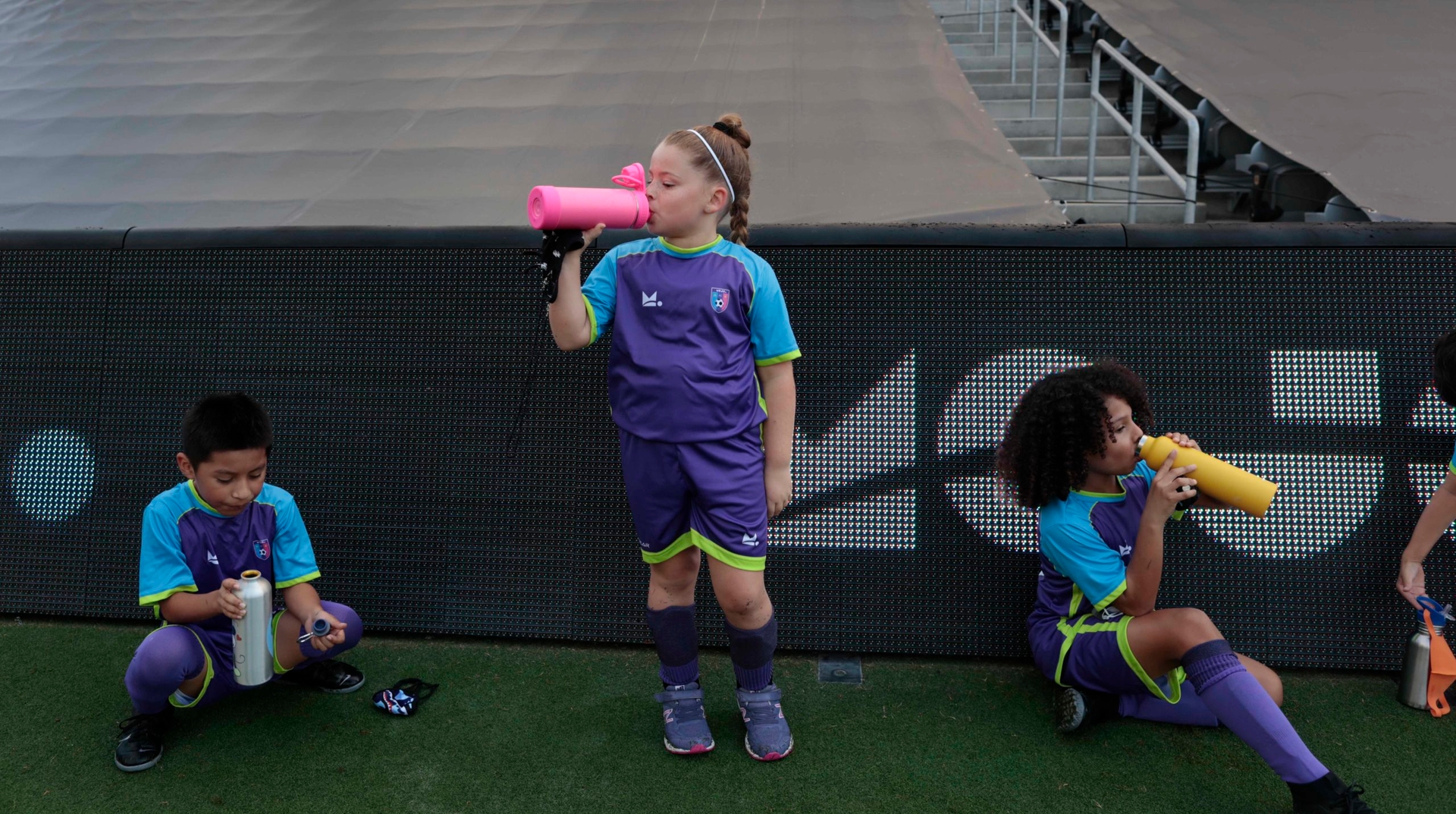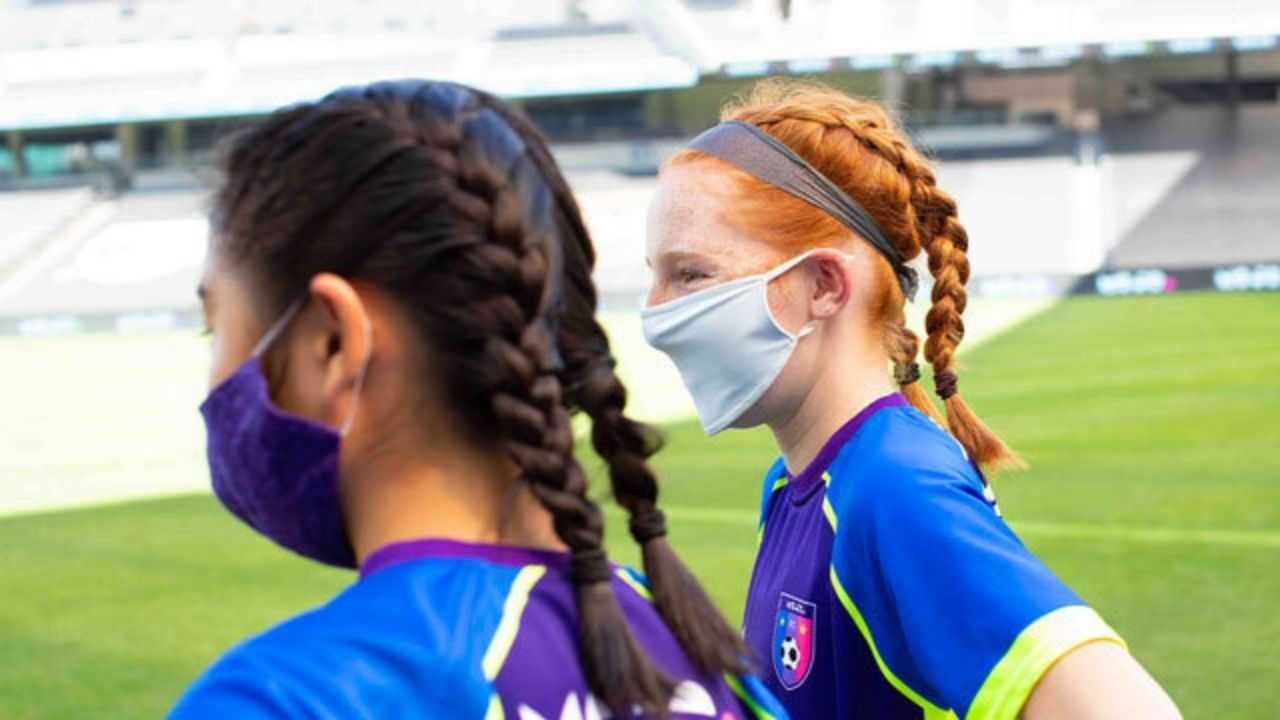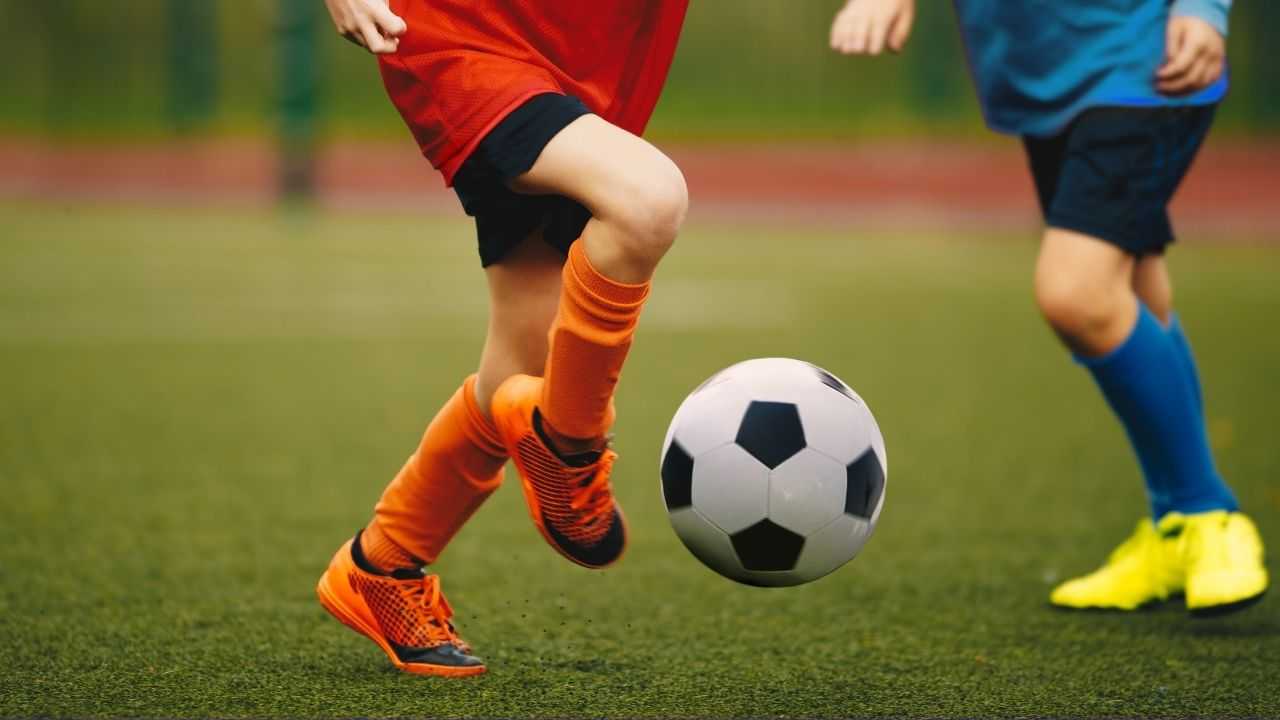How Much Water Should Kids Drink?
Proper hydration for kids is more complicated than you might think
Diana McKeon Charkalis
| 4 min read

Joshua Cogan/MOJO
When her daughter began playing soccer at age 4, Heather Mangieri would sit on the sidelines, watching. Most kids seemed more interested in picking dandelions than chasing the ball. But when the coach called timeout for water breaks, they all ran up to mom or dad for a few sips of water, even if they weren’t thirsty.
Some parents complained about the breaks, but not Mangieri, who is a registered dietitian-nutritionist specializing in sports nutrition. She was thrilled.
“The coach knew the kids didn’t necessarily need water every 15 minutes. They weren’t doing a ton of activity. But he made them take breaks because he felt that part of his job was to teach them healthy habits,” she says. “I loved seeing that in action.”
How many water breaks?
Mangieri, author of Fueling Young Athletes, says it’s never too early to get young players used to drinking water during games and practices. “While young athletes need all of the essential nutrients to support health and performance, water is by far the most vital.” And even when kids lose as little as 1% of their body weight through sweating, it can affect both their endurance and performance.
During practices and games, kids should be offered a drink break every 15 minutes of continuous exercise, according to the American Academy of Pediatrics. And the amount of water matters. As a rule of thumb, Mangieri suggests four to six gulps of water per break. “One large gulp is about 1 ounce, so the kids will get 4 to 6 ounces of fluid if they follow that guideline.”
The Gatorade effect
Although water should be the go-to choice for young players, many do show up with sports drinks or energy drinks instead. These drinks, which are designed to provide fuel, fluid and electrolytes, also contain sugar and are not typically needed, says William Adams, director of the Hydration, Environment and Thermal (H.E.A.T) Stress Lab at the University of North Carolina Greensboro. Reserve them for situations when kids are playing for more than 70 minutes continuously in temperatures of at least 80 degrees F, he says.
That said, it’s hard to compete with sports drinks. “Gatorade has the sexiness around their beverage because of the taste and the celebrities who are promoting it. If you could create the same enthusiasm and excitement around water that they do around Gatorade, I think that would be a game-changer,” Adams says. “But we’re not there yet.”
Make water great again
To make drinking water more fun, and less like a chore, Mangieri suggests giving kids water bottles that feature team names and colors. Draw lines on the bottle so kids can track their own intake. She also recommends drinking out of a straw. “Most kids will drink more through a straw than if they have to tilt the bottle and drink that way” she says. Straws help with kids who have aversions to drinking water, too.
For other kids who “don’t like” water, parents can try flavoring it with lemons, strawberries or cucumbers, or even making DIY sports drinks at home
Hydration for every day, not just game day
Why such a big deal over water? A child’s heating and cooling system is less efficient than an adult’s, says Adams. And signs of dehydration can be vague, particularly with younger kids. Aside from noticeable thirst, kids might complain about headaches, lightheadedness, irritability, weakness or nausea. They might not “feel like” participating.
To reduce the risk of heat-related illness, Adams says to avoid training during the hottest part of the day or when there’s intense humidity. If kids end up playing in the heat, offer more frequent breaks (say, every 8 to 10 minutes) and try to find a cooler, shady area.
It helps to get parents on your side as well. They’re the ones that make sure a child stays hydrated on a daily basis.
Rather than focusing on pre-hydrating right before games, Adams says it’s more important to get a child or teen on an overall schedule of drinking water, aiming for about two liters per day for children age 8 and older. “It’s important for kids to go into sports hydrated,” he says. “And to do that you have to think about the other 22 hours of the day.”




